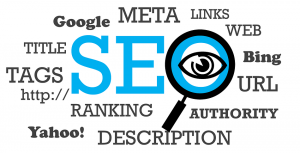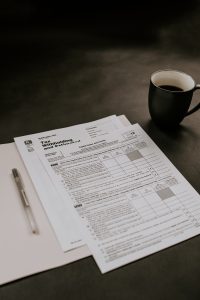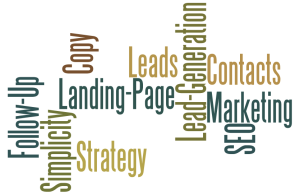For the inexperienced company preparing to expand internationally, seeking, finding and qualifying competent patent translation services to assist with overseas patent applications or other technical translations isn’t necessarily a high priority. It should be, however, as even one inaccurate or confusing translation can jeopardize the entire operation, or at least potentially cost millions of dollars in lost revenue and damaged brand reputation.
While accurately translating product and marketing materials is important, translating patents is even more so, with the scope of an entire product defined and judged forever by what is included in the final patent. As a result, being a patent translator requires much more than just a bilingual background. The position requires having the same level of technical expertise as the individual writing the original patent, as well as mastering a(n):
- Native fluency in the source and target languages
- Understanding of legal norms
- Competency in drafting claims with appropriate scope in the target language
- Specific technological vernacular
Without this expertise, a company greatly increases its risk of costly litigation and potential loss of intellectual property (IP) protection.
Let’s delve more deeply into what qualities are necessary for every proficient patent translator working with an IP translation service to possess and why:
Technical Expertise
In addition to understanding how to use language and grammar in patents, an effective translator must have a specific understanding of the subject matter to which the patent relates. This understanding is vital to the accurate description of the patent and the correct use of technical terminology.
The following example demonstrates how a misunderstanding of an invention’s technical aspects can create a seemingly small change in the patent’s description, which could result in disaster for a company trying to protect its IP:
Incorrect: “Electrolyte for photoelectric conversion element, photoelectric conversions element using the electrolyte, and dye-sensitized solar cell.”
Correct: “Electrolyte for photoelectric conversion element, and photoelectric conversions element and dye-sensitized solar cell using the electrolyte.”
In the correct description, the electrolyte is used both in the photoelectric conversion element and in the dye-sensitized solar cell.
Patents are precise documents. Since translations are rarely a simple, word-for-word exchange, translators who misunderstand the technology for which they are seeking protection may use word placement and punctuation that can easily change the meaning. A slightest mistake in language usage or technical description can alter the effectiveness of the entire document. Even worse, after a large investment in development, the company filing an “incorrect patent” (like in the example above) might eventually learn that their technology is not protected from infringement.
Expertise in Language – Legal and Linguistic
Patent translators must also excel in the application of language, grammar and structure unique to patents. Having actual experience in translating patents is critical because the way a language is used in patents doesn’t always follow the linguistic conventions of that language. For example, in German, patent claims never start with an article (i.e. the definite ‘der’ or the indefinite ‘ein’). Not using an article before a noun in German is usually considered grammatically incorrect—and to a translator inexperienced in patent translation, omitting the article would seem awkward and incorrect. Consider this example:
Original English patent
An applicator (10) comprising:
Correct German translated patent
Applikator (10), umfassend:
Only a translator with patent experience would understand and confidently follow this unusual convention, which in this case goes against grammatical norms.
Legal and Filing Expertise
Patent translators also need a firm grasp of the legal requirements and the filing process for the target country. For example, as patents move through the different stages of approval in Japan, they are given different numbers. In the first published stage, patents are designated as ‘A patents’ and given a number that starts with the year. In the next stage, if the patents are granted, they are designated as ‘B patents.’ If the patents do become B patents (not all do), they receive a new number. Because A patents are the first publication of a patent, they are the most commonly translated. Sometimes, however, even after a patent is granted, a company might decide to go into additional countries and need a B patent to be translated. If a translator does not understand the Japanese system for numbering, mixing up a patent’s A and B numbers will result in an unrelated case.
Companies often employ legal experts within target countries to complete the patent filing process, potentially editing it for compliance and quality. The companies need to be cautious, however, when allowing these legal experts to make changes that are not legally or technically necessary in hopes of ‘improving’ the document. These changes can potentially create technical and linguistic errors that may leave the patents inconsistent with industry standards, approved terminology and style guides. The result is an erosion of trust, and ultimately, more billable hours spent fixing the problem.
To avoid these potential issues, companies should select IP translation service providers with the specialized knowledge to translate a patent accurately, as well as the capability to prepare a patent application correctly, so it is ready for filing in the target country. Navigating a country’s patent filing requirements can take years to master, and vendors with this expertise are highly regarded in the patent translation field.
How Do You Know?
To find out if a patent translation services provider being considered employs translators with the experience outlined above:
- Ask for examples and references
- Follow up with the references to assess each provider’s experience in the patent translation industry
- Find out how long they have worked with current clients, as long-term relationships demonstrate quality and approval of the work they have conducted through the years
IP is the lifeblood of most businesses and needs to be protected, so ensuring the translators being entrusted with this lifeblood have linguistic, technical and legal expertise should be one of the first – and ongoing – projects for companies wanting to protect their IP internationally.
(202)





